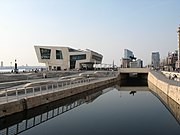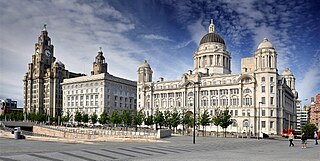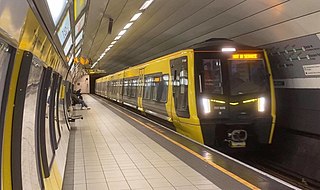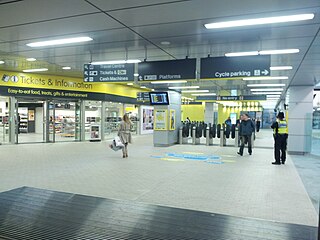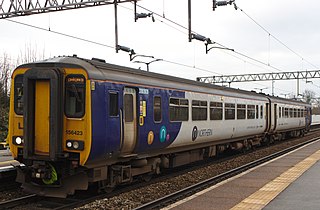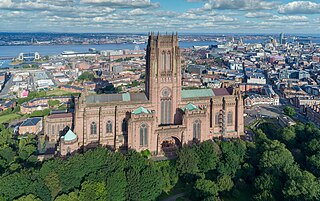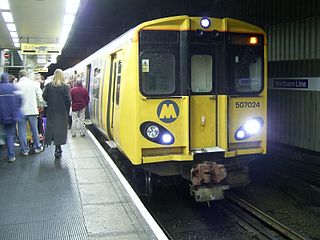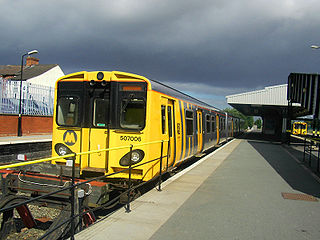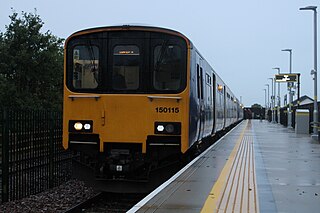- Pier Head Ferry Terminal, Liverpool for Isle of Man Steam Packet Company services to Isle of Man during summer
- Yachts at Liverpool Marina, Coburg Dock
- Salthouse Dock narrowboats
- Liverpool2 location, Seaforth Docks
Road
Cars

Liverpool has direct road links with many other major areas of England. The A5058 road / Queens Drive inner ring road was completed in 1927, the A580 road / East Lancs Road (the UK's first inter-city highway) to Salford was opened in 1934, and the M57 motorway outer ring road was completed and opened in 1974. The west to east M62 motorway connects Liverpool (since completion of junction 4 in 1976) with Hull, and also provides a link with areas including Manchester, Leeds, and Huddersfield. Not far along the M62 from Liverpool is the interchange with the north to south M6 that provides links to more distant areas including Birmingham, Staffordshire, the Lake District and the border with Scotland. [1]
The Kingsway road tunnel gives direct access to the M53 motorway, which runs east to the M56. The north-south M6 has a junction with the M56. The Queensway road tunnel gives a direct link to the A41 that eventually leads to London, although using the M62 or M6 and eventually M1 is a far quicker route from Liverpool to London. However, the A41 is a relatively quick and direct link with Cheshire and Shropshire. This in turn provides a quick link to the A55 road that runs along the North Wales coastline. [2]
In the early 1960s, there were plans to build a "Liverpool Inner Motorway" which would have been similar to the "urban motorways" which were later built around the cities of Manchester and Leeds. The motorway was still a possibility as the 1970s drew to a close, but it was never built. The only section built was from Leeds Street in the north of the city centre, south along the dock road to Parliament Street. [3]
Buses
Merseytravel acts as the responsible authority for the planning and commissioning of local bus services in Liverpool and throughout the wider Merseyside area. [4] Currently, Arriva and Stagecoach provide the vast majority of local bus services within the city, with a number of smaller operators providing specific routes where there is a defined public need. [5] For-profit bus operators within Liverpool are given extensive public subsidising by the taxpayer, to the cost of £60 million each year. [6] [7] In 2022, a new maximum £2 fare for single bus journeys was introduced within the region across all operators, [8] bringing down the average price of a single fare. It is the ambition of Liverpool City Region Mayor Steve Rotheram to get bus services within the region up to a 'London-standard' of service quality. As part of this ambition, a new integrated smart ticketing system with fare capping will be introduced, [9] alongside a new public franchising model under which operators can bid for Merseytravel contracts to run their branded buses. [10] [11]
Long-distance coach services arrive at and depart from the National Express stop at Liverpool One bus station. Local buses serve the whole of the city and its surrounding areas. The two principal termini for local buses are Queen Square Bus Station (located near Lime Street railway station) for services north, east, and west of the city, and Liverpool One bus station (located near the Albert Dock) for services to the south and east.
Tour bus services from City Sights and City Explorer by Maghull coaches operate in the city centre.
- Liverpool One Canning Place bus station
- Queen Square bus station
- City Explorer
- Magical Mystery Tour
- Arriva Crossriver
- CitySightseeing bus
- City Sightseeing Liverpool tour bus 2011
Cycling
- Moorfields, near Exchange St
- NCN 56, Armstrong Quay off Riverside Drive
- VOI scooters outside the Albert Dock gate
National Cycle Route 56, National Cycle Route 62 (along the former North Liverpool Extension Line) and National Cycle Route 810 passes through Liverpool. In 2020 VOI e-scooter-sharing system launched in Liverpool. [12]


















